Interior Transformation Design and Build in Bangladesh
Interior transformation refers to the comprehensive process of redesigning and re configuring a space’s interior elements to enhance its aesthetic appeal, functionality, and comfort. This could involve various changes—from fresh paint and furniture arrangements to complete structural modifications. Imagine walking into your living room; the dull layout and outdated decor seem to drain energy from the space. By undergoing an interior transformation, you can breathe new life into that room, making it not only visually striking but also perfectly tailored to your needs. It’s not just about looks; it’s about creating an environment that resonates with your style and enhances your daily life.
Architectural and interior design transformations go beyond mere aesthetics. It incorporates space optimization and sprite uplifting, masterfully creating environments that embody luxury, function, and avant-garde charm. Armed with a squadron of visionary dream weavers, we re imagine existing structures. Body modifications joined with interior re-creations translate into architectural masterpieces that not only celebrate beauty but uplift daily life experiences. Serving to raise both style testimony and practical habits creates a total environment that brushes a blend of chic comfort in the texture and functions of your living spaces. Charge into a new environment unknowingly pulling design innovation and trends around architecture.
Planning Your Interior Design Transformation:
Setting Design Goals: Once you’ve grasped the concept of interior transformation and its benefits, the next step is to articulate your design goals. What do you hope to achieve with this transformation? Setting clear, actionable goals will guide your decisions and keep you on track. Next, let’s dive into budgeting considerations. Trust me, creating a well-defined budget is crucial for a smooth transformation. You don’t want to fall in love with a design only to find out it breaks the bank! List Your Priorities: Determine what aspects of the transformation are non-negotiable, whether it’s high-quality materials or a professional designer’s guidance.Consider All Costs: Beyond just purchasing furniture and décor, remember to include installation, delivery, and any potential renovation costs. Track Spending: Use a simple spreadsheet to keep tabs on your expenses. This not only keeps you accountable but also offers a clear visual of where your funds are going.
Here, we offer an extensive range of services encapsulating planning layouts, conceptual designing, and incorporation of furnishings amid many others. Our process is rigorous, charting a route from an initial consultative meet to understanding requirements, extending through forecasting the impacts of renovations, facilitating procurement & acquisitions, and timely accomplishment of the project within stipulated budgets. Endowed blending knowledge and creativity, we exemplify design excellence through a bespoke transformation, stringing comfort with utilitarian elements amplifying architectural aesthetics. Propel your interior identity alongside spectacular architectural facades that last a lifetime. As one of Bangladesh’s leading office interior design firms, our employee room design process includes many services.
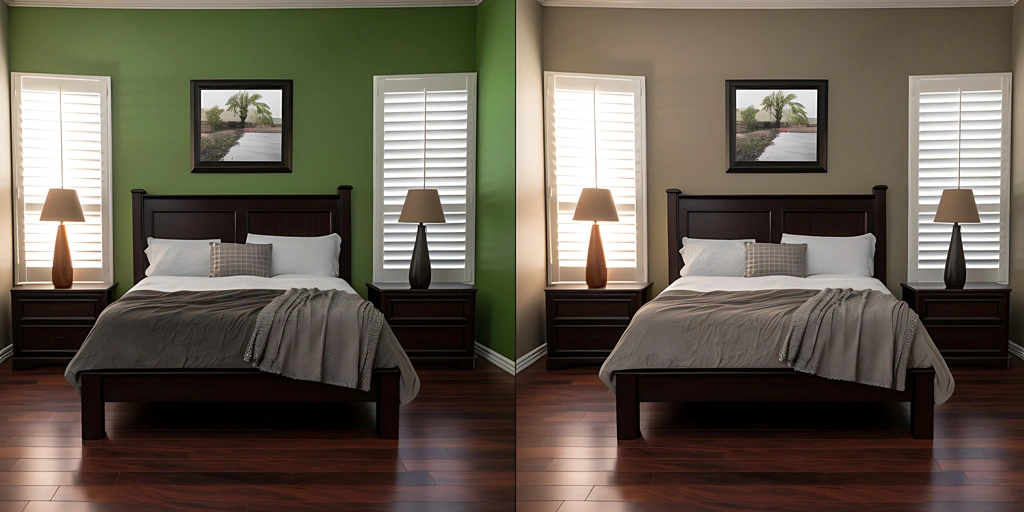
Choosing a Design Style:
Finally, let’s talk about choosing a design style. This is where your personality really shines through!
Think of styles that resonate with you, such as:
Contemporary: This style emphasizes clean lines and minimalism, perfect for a modern twist.
Rustic: Inviting and warm, using natural materials like wood and stone.
Mid-Century Modern: Known for its retro flair and functional forms.
You could even create a mood board using Pinterest or physical clippings to visualize your ideas. The key is to select a style that harmonizes with your vision and meets your functional needs. With clear goals, a solid budget, and a well-defined style in mind, you’re now equipped to embark on your exciting interior transformation journey!
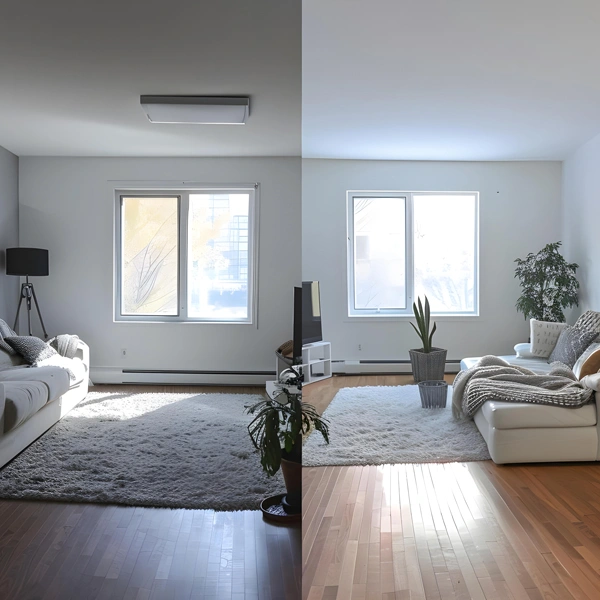
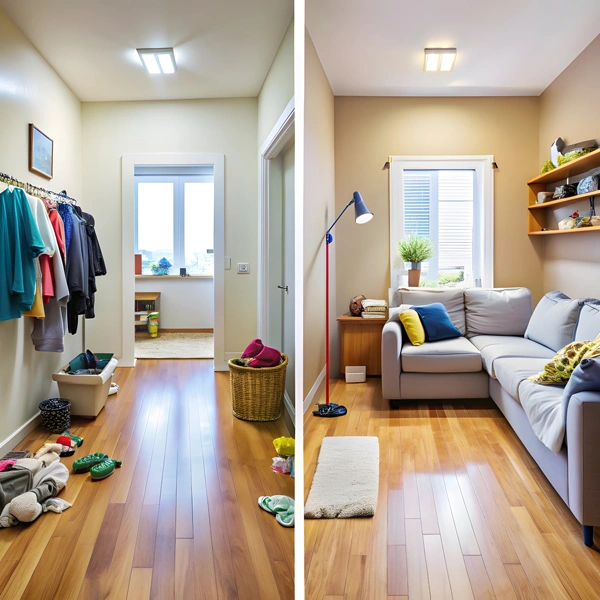
Interior Transformation Process:
Preparing the Space: With your goals defined, a budget set, and a design style picked, it’s time to move into the exciting phase of transforming your space! The first crucial step here is preparing the space. Think of this as laying the foundation for your new design.
Decluttering: Start by clearing out the existing items. This isn’t just about tidying up; it allows you to visualize the possibilities without clutter. Consider donating or selling items you no longer need.
Assessing the Current Layout: Take a moment to evaluate how the current layout works for you. Can you envision a better flow? Sketching your new layout on paper can be a fun way to play with different ideas.
Cleaning: No transformation is complete without a deep clean. Dust those hidden corners and scrub surfaces; it makes an incredible difference!
Selecting Materials and Furnishings:
Now that your space is prepped and ready, let’s move on to selecting materials and furnishings. This step is where the magic happens!
Choose Quality Over Quantity: Invest in quality materials that will stand the test of time, like durable fabrics for upholstery or robust wood for furniture.
Create a Cohesive Palette: Stick with a color palette that complements your design style. For example, if you’re aiming for a serene atmosphere, incorporate calming hues like soft blues or greens.
Mix and Match: Don’t be afraid to combine different textures or materials. Pairing a sleek metal with warm wood can create a dynamic contrast that adds depth.
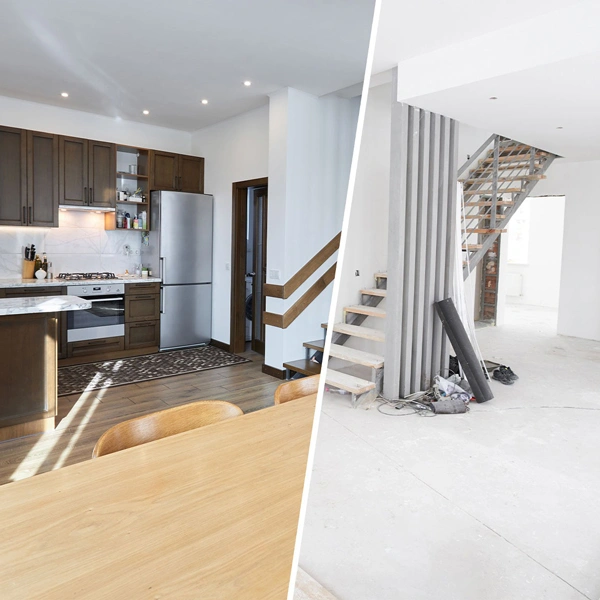
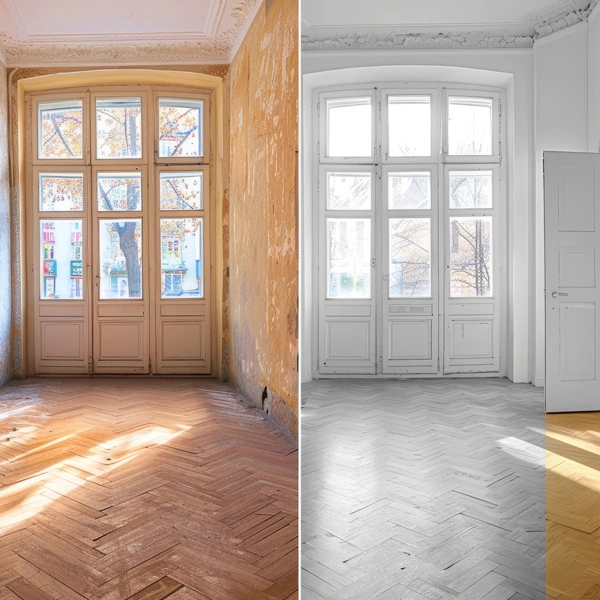
Implementing Design Changes:
Finally, it’s time to implement your design changes! This is where your vision comes to life.
Follow Your Plan: Begin with major changes first, such as painting walls or flooring updates. Once that’s done, layer in the furniture and decorative elements.
Adjust as Needed: Sometimes, what looks good on paper doesn’t translate perfectly in reality. Be flexible and willing to make adjustments to enhance the overall look and feel of the space.
Final Touches: Once your primary changes are complete, it’s the finishing touches that will truly make your space feel like home. Add in décor, artwork, and personal items that tell your story.
Each step in the interior transformation process paves the way for your dreams to materialize, turning your home into a beautiful space that reflects your personality and enhances your lifestyle.
Benefits of Architectural & Interior Design Transformations:
The repercussions of revamping your spaces are manifold: skyscape-shaping submissions meld aesthetics with utility; remodeling efforts fuse trendiness into sturdy spiritual zones. Integrating spatially generous packing further gives way to prevalent quenelle imprint, cultivating a striking expanse contrast. Additionally, it augments the property’s value, making it an attractive investment opportunity. Visualization becoming reality—thorough our service lineup re designed Gers accomplish it here. Our team’s dexterous hands sculpt seamless silhouettes; plush living carpets ensuring a warm and welcoming environment. Our bespoke solutions elevate every fold of your residence, forging a sublime minuet between sophistication and functionality.
Enhancing the Aesthetics of Your Space:
– Importance of architecture and interior design in enhancing the beauty of a space
– Role of design in setting a specific tone or atmosphere
Optimizing the Functionality of Your Space:
– How good architectural and interior design maximizes space usage
– Re-imagining space for improved functionality
Improving the Quality of Life:
– Link between well-designed spaces and good quality of life.
– Importance of great design in providing comfort
Architectural & Interior Design Services
Home Renovation:
Redesigning interiors for a fresh look.
Renovation procedure and timeline
Space Optimization:
Re configuring space for maximum usability.
Methodology and deliverables
Aesthetic Refurbishment:
Redecoration for improved look and feel.
Process of updating a space aesthetically

How Architectural & Interior Design Transformations Work
Initial Consultation:
Case appraisal and needs identification.
Discussion over style preferences and layout
Design Proposal:
Presentation of initial sketches or virtual renderings.
Design Finalization:
Selection of preferred design.
Final design and project cost estimation.
The Transformation Process:
Breakdown of the transformation process with time frame.
Sustainable Interior Transformation:
Eco-Friendly Materials: As you continue your journey through interior transformation, embracing sustainability can lead to a more enriching experience while also caring for our planet. One way to achieve this is by choosing eco-friendly materials. Not only do they contribute to a healthier environment, but they also bring unique aesthetics to your space.
Here are some eco-friendly materials worth considering:
Bamboo: This rapidly renewable resource makes a fantastic choice for flooring, furniture, and decor. It’s durable, stylish, and has a low environmental impact during production.
Reclaimed Wood: Using wood salvaged from old buildings or furniture not only reduces waste but adds character and history to your home. It can create a rustic charm that new materials often lack.
Low-VOC Paint: When painting your interiors, opt for low-volatile organic compound (VOC) paint. It minimizes harmful fumes and contributes to better indoor air quality, making your living space healthier for you and your family.
When I transformed my home office, I chose reclaimed wood for my desk. The unique grain and history of the wood added a touch of elegance while reminding me of my commitment to sustainability.
Energy-Efficient Design Techniques
In addition to selecting eco-friendly materials, implementing energy-efficient design techniques can significantly reduce your home’s carbon footprint while also saving you money on utility bills.
Consider these strategies:
Maximize Natural Light: Utilize large windows, skylights, or light tubes to bring in more daylight. This not only cuts down on energy usage but also creates a warm and inviting atmosphere.
Insulation: Proper insulation in walls and ceilings helps maintain consistent temperatures and reduces the need for heating or cooling, leading to lower energy consumption.
Energy-Efficient Appliances: When it’s time to upgrade appliances, invest in energy-efficient models. These often come with the ENERGY STAR® rating, ensuring they use less power while providing the same level of performance.
By incorporating eco-friendly materials and energy-efficient design techniques, you can achieve a sustainable interior transformation that not only looks good but also contributes positively to the world we live in. Making mindful choices now can lead to a healthier, more sustainable home for you and future generations, proving that elegance and environmental responsibility can go hand in hand!
Maximizing Space and Storage Solutions:
Creative Space Utilization: As you continue to enhance your interior design, one of the most critical aspects to consider is maximizing space effectively. Whether you’re in a cozy apartment or a larger home, clever space utilization can transform even the smallest areas into functional and stylish environments.
Here are some creative options to consider:
Multi-Functional Furniture: Invest in furnishings that serve more than one purpose. For example, a sleeper sofa provides seating by day and a guest bed at night, while ottomans with storage can hold throws or magazines.
Vertical Space: Don’t overlook your walls! Installing tall bookshelves or wall-mounted shelving can draw the eye upward, creating a sense of height while providing extra storage. A well-placed pegboard can also be a fantastic organizational tool for smaller items.
Underutilized Areas: Identify areas that may not be used to their full potential. For instance, the space under stairs can house a built-in desk or reading nook, turning an awkward spot into a cozy retreat.
When I revitalized my small home office, I opted for a floating desk. This not only saved floor space but also gave the room an airy feeling while offering ample workspace.
Organizational Strategies
Once you’ve optimized the physical space, implementing strong organizational strategies is essential to maintaining order and ease of access in your home.
Here’s how to keep everything organized:
Decluttering Regularly: Schedule time every few months to reassess your belongings. Donate or recycle items that no longer serve a purpose; this helps maintain a clean and clutter-free environment.
Categorized Storage: Invest in labeled bins or baskets for storage. Keeping like items together—whether toys, paperwork, or craft supplies—makes it easier to find what you need, reducing frustration and time wasted searching.
Utilize Drawers and Cabinets: Use drawer dividers to keep contents within organized and accessible. In cabinets, consider tiered shelving or lazy Susans to maximize storage capabilities and reach hidden items easily.
By creatively utilizing your space and implementing effective organizational strategies, you can create a harmonious environment that feels spacious and inviting, no matter its actual size. The result? A well-ordered sanctuary that enhances your lifestyle and reflects your sense of style!
Trends in Interior Transformation:
Popular Design Trends: As you embark on your interior transformation journey, it’s essential to consider current design trends that can infuse your space with contemporary flair. Staying updated with popular trends not only revitalizes your home but also keeps it aligned with what’s fresh and relevant.
Here are some trends making waves in the interior design world:
Biophilic Design: This trend focuses on incorporating natural elements into your space, aiming to create a connection with nature. Think large windows that let in ample light, indoor plants, and natural materials like wood and stone.
Sustainable Practices: With an increasing awareness of our environmental impact, many homeowners are opting for eco-friendly materials and practices. Recycled materials, vintage furniture, and products made with sustainability in mind are more sought after than ever.
Colorful Accents: While neutral tones will always have their place, vibrant colors are making a comeback. Accent walls, colorful furnishings, and bold artwork can add personality and vibrancy to your home.
Minimalism with a Twist: The minimalist aesthetic remains popular, but now it often includes unexpected elements, like layered textures and contrasting materials, to add depth without cluttering the space.
Future Forecast in Interior Design:
Looking ahead, the future of interior design is set to evolve further, influenced by technology, sustainability, and changing lifestyles.
Here are some forecasts to watch:
Smart Integration: Expect an increase in smart home technology integration. As innovations emerge, homes will likely become more interconnected, responding to your habits and preferences seamlessly.
Adaptable Spaces: With more people working from home, the demand for flexible spaces will rise. Designing rooms that can easily convert from a home office to a guest room, or living space to a workout area, will become essential.
Health and Wellness Focus: Interior spaces will increasingly prioritize health. Features like air purification systems, circadian lighting, and natural materials will be standard as homeowners seek out environments that promote well-being.
By embracing these popular trends and future forecasts in interior design, you can ensure your transformation is not only stylish but also forward-thinking and reflective of your values. A well-designed space enhances daily life, aligns with modern aesthetics, and enhances overall well-being—what more could you ask for in your home?
Budgeting for Interior Transformation
Cost Factors to Consider
Now that you’re familiar with current trends and how to transform your space, it’s time to talk about one of the most crucial aspects of any interior design project: budgeting. Understanding the cost factors involved in your transformation will ensure you stay on track financially.
Here are some cost factors to keep in mind:
Materials and Furnishings: Different materials come with varying price tags. For instance, hardwood flooring may cost more than laminate, and designer furniture can significantly exceed the budget of standard options. Research and compare prices to find quality options that suit your wallet.
Labor Costs: If you’re hiring professionals, factor in labor costs for installation, design consultation, and contractors. Depending on your project’s complexity, these costs can add up quickly.
Permits and Fees: If your transformation involves structural changes, you may need permits, which can incur additional fees. Always check local regulations beforehand to avoid surprises.
Contingency Fund: It’s wise to set aside about 10-15% of your budget for unexpected expenses that may arise. This could include discovering hidden damage during renovation or changing your mind mid-project.
Tips for Cost-Effective Design Solutions
With cost factors in mind, let’s explore some practical tips for cost-effective design solutions that won’t compromise on style.
DIY Where Possible: If you have a knack for handy work, tackle some tasks yourself. Simple projects like painting walls or assembling furniture can save you quite a bit.
Shop Sales and Discounts: Look out for seasonal sales, clearance items, or online discounts. Websites like Wayfair or Overstock frequently have great deals that can help stretch your budget further.
Repurpose and Upcycle: Before going all out shopping for new pieces, consider revamping what you already own. A fresh coat of paint or new hardware can transform outdated furniture into something fabulous with minimal investment.
Buy Second-Hand: Explore thrift stores or online marketplaces for pre-loved treasures. You’d be amazed at the unique finds that can add character to your home at a fraction of the cost.
By thoughtfully considering the cost factors and implementing these cost-effective design solutions, you can execute a stunning transformation without breaking the bank. Remember, a successful interior design project not only reflects your style but also respects your financial boundaries!
Architectural and Interior Design Transformations Image Gallery:
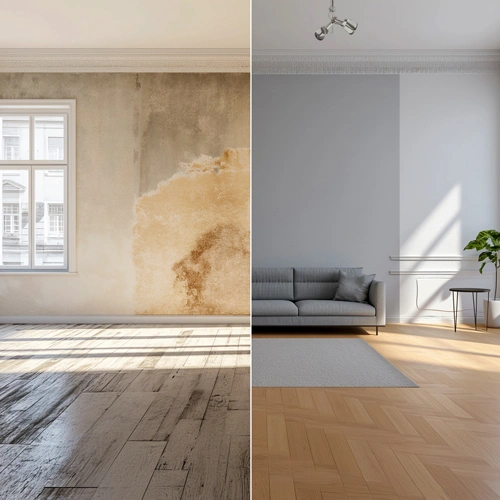
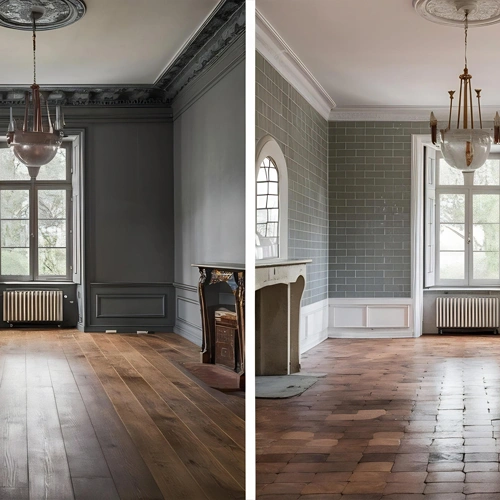
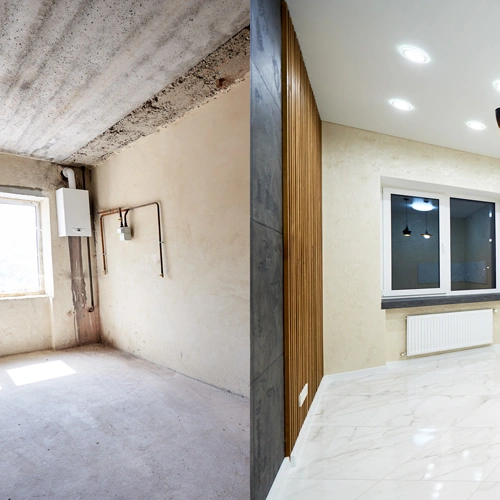
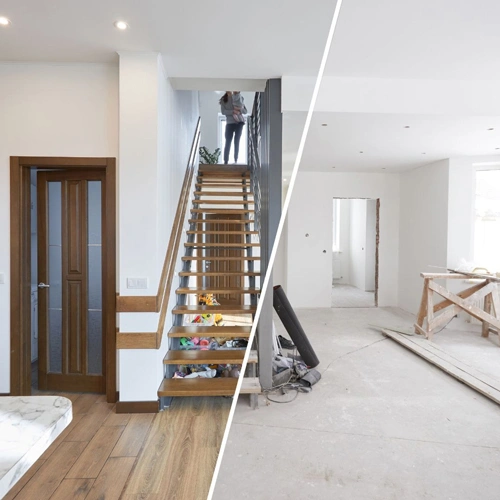
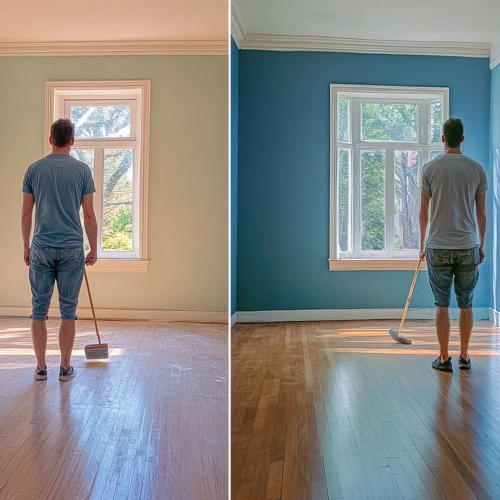
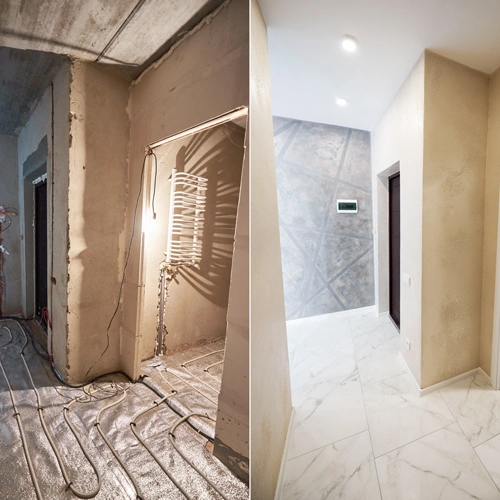
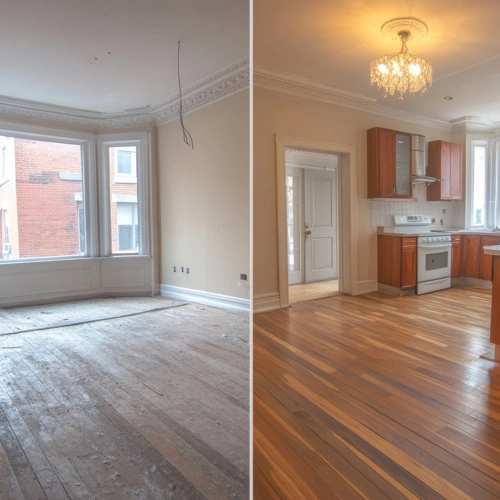
FAQ about Architectural and Interior Design Transformations
-
What do I want to change interior transformation?Identify specific areas in your home that need assistance—maybe it's to brighten a dim room or create more seating in your living area.
-
How will I use the space interior transformation?Think about the purpose of the room. Is it for entertaining, relaxation, work, or perhaps all of the above.
-
What mood do I want to create interior transformation?Your goals should reflect the emotional tone you want, which can range from cozy to modern elegance.
-
So, why should you consider an interior transformation?Here are some compelling benefits that may inspire you: Enhanced Functionality: A redesigned space can be more practical, making everyday activities smoother and more enjoyable. Picture having a kitchen that flows seamlessly into your dining area, making meal prep and gatherings more convenient. Increased Property Value: A well-executed transformation can significantly raise the market value of your property if you ever decide to sell. Buyers often seek homes that feel modern and inviting. Personal Expression: Your home should reflect who you are. An interior transformation allows you to infuse your personality into your environment—through color schemes, chosen furnishings, or thematic decor. Improved Well-Being: Environments have a profound impact on our mental health. A brighter, more organized space can lead to reduced stress and increased motivation. To summarize, whether it’s a minor facelift or a complete overhaul, interior transformation opens up endless possibilities to create a space you’ll love. So, your home could be calling for a change—are you ready to answer?
-
What is Interior Transformation?Interior transformation is the process of redesigning and renovating a space to improve its functionality, aesthetics, and overall appeal. This can involve anything from minor updates like painting and new furniture to major structural changes like knocking down walls or adding extensions.
-
What are the common types of interior transformations?Residential: <br/Kitchen remodeling. <br/Bathroom renovations. <br/Bedroom makeovers. <br/Living room updates. <br/Home office design. <brCommercial: <br/Office space design. <br/Retail store design. <br/Restaurant and bar design. <br/Hospitality spaces.
Design 2morrow
Typically replies within minutes
আসসালামু আলাইকুম,
আপনার প্রয়োজণীয় তথ্য জানার জন্য ফোন করুন,
☎️ +8801870720555, অথবা- ভিজিট করুন আমাদের ওয়েবসাইট-
🌍 www.design2morrow.com
ধন্যবাদ
Design 2morrow | Interior Design Company
Interior Transformation services?
WhatsApp Us
🟢 Online | Privacy policy
WhatsApp us
